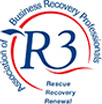There may come a time when, during the development of a company or group of companies, that the directors and shareholders may wish take advantage of current tax legislation by diversifying the ownership of their business activities.
There are numerous reasons why a possible reorganisation of a company’s activities may be desirable and tax advantageous. However, it is usually the desire to divide the company’s assets so that shareholders each end up with the part of the business that they really want. Alternatively it may be due to the fact that the directors merely wish to protect one particular part of the company.
There are two main ways of achieving this – the first being through a statutory demerger and secondly by using Section 110 of The Insolvency Act 1986. This article deals solely with the Section 110 procedure.
Before embarking on such a scheme it is absolutely imperative that all relevant tax issues are addressed. Company reorganisations are fraught with potential tax liabilities, including capital gains tax, income tax on potential distributions, inheritance tax, and possibly stamp duty land tax. A number of directors can be put off by the thought of having to deal with HMRC, particularly those of smaller companies. However HMRC have for a number of years recognised the procedure under Section 110 and will, wherever possible, give the appropriate tax clearances, provided that the reorganisation is being carried out for genuine commercial reasons and that the various tax reliefs being sought are actually available. Provided that the proposed reorganisation then follows the route previously advised to HMRC, the tax liabilities should be kept to a minimum.
As mentioned earlier, one of the key driving points behind wanting to implement a Section 110 reorganisation will often be the desire to separate the business assets or activities of the company, in order to minimise the risk to other parts of the business. Equally it may be to allow the directors or shareholders the opportunity to take greater ownership of a part of the business that they wish to develop. It could also be that the board simply wish to simply sell a part of the business and retain the remainder.
Once the board/shareholders have decided that they wish to implement a reorganisation using Section 110, the first thing they need to do is to contact a Licenced Insolvency Practitioner for advice on how to implement such a scheme. All Section 110 reorganisations involve a formal Members Voluntary Liquidation (MVL) process – only a Licenced Insolvency Practitioner can formally complete this process.
Most Section 110 schemes involve the creation of a new limited company, usually a holding company which as part of the reorganisation process will be placed into liquidation (MVL). Existing shareholders in the trading company will exchange their shares for shares in the new company. The assets of the existing trading company will then be reorganised into the relevant entities that will make them easily transferable out of the group. This may well involve either the transfer or distribution of the assets or shares across to the new company prior to the formal commencement of the liquidation process.
The next stage is to form two or more companies. The new holding company is placed into Members Voluntary Liquidation, with the liquidator then distributing the assets of the holding company in exchange for shares to be distributed to the shareholders of the holding company. The shareholdings in the other new companies do not have to be in the same proportion as the shareholdings in the holding company. However it is critical to the success of such schemes that to avoid a tax charge that the shareholders inherit shares with a value proportionate to their pre – reorganisation value.
The key criteria to a successful Section 110 reorganisation can be summarised as follows:
- A viable commercial reason for doing so
- Expert tax planning and advice from day one
- An experienced Insolvency Practitioner
- An experienced solicitor with previous knowledge of such schemes.
Section 110 schemes can be an excellent way of reorganising a company’s business whilst taking advantage of current tax reliefs – however the legislation and rules applying to such schemes are fairly complex and we would advise any directors or shareholders contemplating such schemes to at least call us for a brief chat to establish whether such a scheme is applicable. We have extensive experience in this particular field and have saved clients significant sums of tax over the years.
We offer free advice and no obligation consultations. To find out more call us or fill in our enquiry form.


